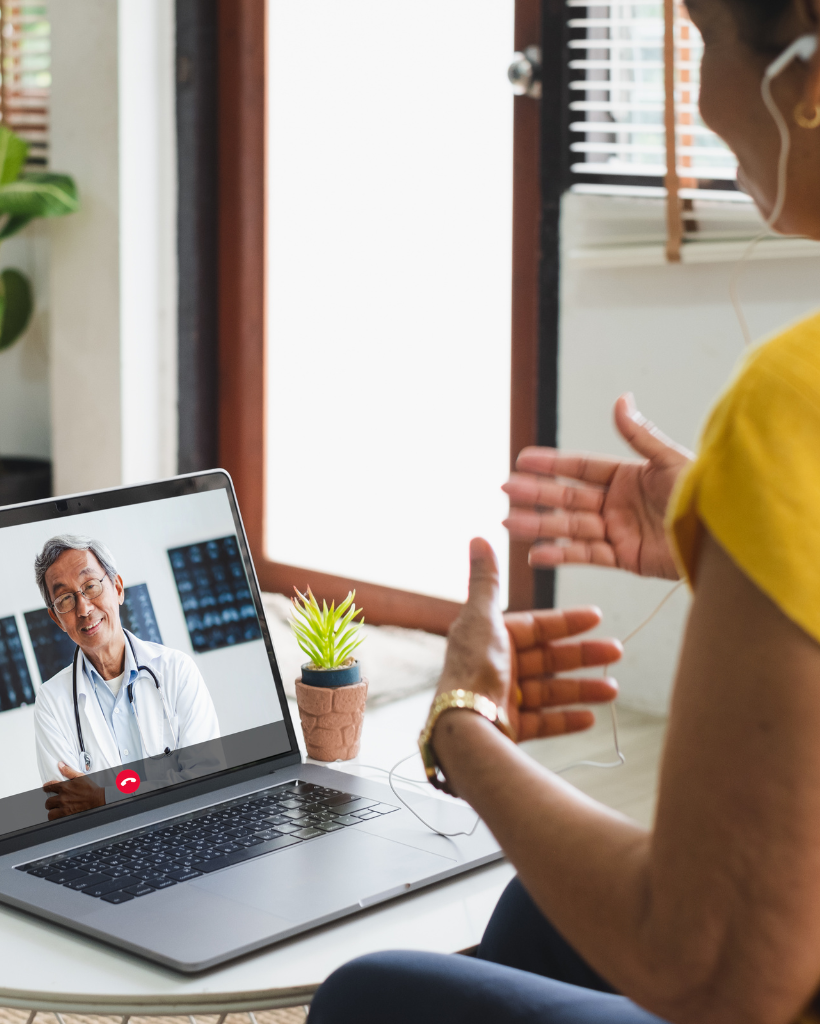Just How Teledoctors Are Changing Accessibility to Medical Knowledge Worldwide
In a period where digital technology penetrates every facet of life, the world of health care is undergoing a transformative change with teledoctors at the center. As they connect the space between people and clinical experts across varied locations, these virtual consultations hold the potential to redefine typical medical care systems. The ramifications for remote and underserved communities are particularly profound, offering unprecedented access to timely clinical experience. Yet, this evolution increases intriguing concerns concerning the future landscape of health care delivery, the difficulties that come with such developments, and the ethical factors to consider that need to be resolved. Exactly how will these components unfold?
Expanding Reach to Remote Areas
In the last few years, telemedicine has actually considerably broadened its scope, breaking down barriers to medical care gain access to in remote and underserved locations. This transformative shift has actually been moved by improvements in digital technology, allowing healthcare carriers to prolong their reach past standard geographic restrictions. Telemedicine leverages telecommunications innovation to facilitate appointments, medical diagnoses, and also remote monitoring of individuals who may or else have limited accessibility to medical care centers.
One of the main benefits of telemedicine in remote locations is its capacity to bridge the space in between professionals and clients (teledoctors). In areas where healthcare facilities is thin, patients can now talk to a wide range of clinical professionals without withstanding extensive travel. This not only conserves time and sources but likewise makes certain timely medical treatment, which can be crucial in handling persistent problems or dealing with severe clinical problems
Moreover, telemedicine equips regional doctor by supplying avenues for collaboration with specialists. This enhances the top quality of care delivered at the community level and promotes a more integrated method to individual administration. By using modern technology, telemedicine is not just expanding medical access but also reshaping the healthcare landscape in remote areas, fostering an extra comprehensive and fair system.
Enhancing Person Ease
Structure on the development right into remote locations, telemedicine also substantially improves client convenience, offering a smooth medical care experience. By getting rid of the requirement for physical travel, people save both time and sources, especially helpful for those with wheelchair problems or demanding timetables. Telemedicine systems allow patients to seek advice from clinical specialists from the convenience of their homes, minimizing anxiety associated with conventional in-person sees.
The versatility of scheduling is an additional significant benefit. Patients can schedule visits outside regular workplace hours, fitting varied way of lives and reducing the demand for time off job or school. This flexibility is vital for maintaining normal healthcare regimens, particularly for those taking care of chronic problems calling for frequent surveillance.
Furthermore, telemedicine offers prompt access to professional assessments, which commonly entail prolonged waiting durations. By connecting patients directly to professionals, it minimizes the hold-ups that frequently come with referrals, therefore expediting diagnosis and therapy initiation. Such prompt interventions can cause far better health results and individual complete satisfaction.
Personal privacy and discretion are maintained with safe electronic systems, ensuring that clients really feel comfy reviewing sensitive health and wellness concerns. Consequently, telemedicine not only broadens gain access to however additionally enhances the total patient experience by prioritizing benefit and availability.

Improving Healthcare Effectiveness
Telemedicine is substantially enhancing health care effectiveness by enhancing and enhancing procedures source allocation. By enabling remote assessments, health care centers can minimize person wait times and raise the variety of patients seen daily without overcrowding physical spaces. This shift enables medical care service providers to maximize their routines and supply more timely care, thereby improving individual results.
Additionally, telemedicine assists in much better source click now monitoring by decreasing the demand for physical framework and reapportioning these sources in the direction of essential locations such as emergency situation solutions and inpatient treatment. teledoctors. Telemedicine platforms also enable smooth assimilation of electronic health documents, which improves communication in between health care experts and makes sure that patient details is conveniently accessible, more decreasing delays in treatment
Additionally, telemedicine empowers medical care professionals to work together better across geographical borders, leading to even more comprehensive take care of people. For example, specialists can offer real-time examinations to primary treatment providers, permitting quicker decision-making and decreasing unnecessary references. By leveraging technology to link the space in between people and companies, telemedicine not just increases the efficiency of medical care delivery but additionally enhances the high quality of treatment that clients obtain. This change is crucial in attending to the increasing demand for medical care services worldwide.
Lowering Health Care Expenses

Additionally, telemedicine platforms can decrease the burden on physical healthcare facilities. By managing non-urgent cases from another location, medical care suppliers can designate resources extra effectively, permitting far better management of critical situations that call for in-person focus. This enhanced resource allotment can lead to a decline in functional expenses, ultimately translating to lower charges for clients.

Assisting In Global Medical Collaboration
The arrival of telemedicine has opened up unmatched avenues for worldwide clinical partnership, making it possible for health care specialists to attach across boundaries effortlessly. This technical improvement permits the smooth exchange of medical expertise, best methods, and innovative treatments, cultivating a collaborative atmosphere that goes beyond geographical limitations. Physicians and experts can now seek advice from peers from various components of the world, getting to diverse point of views and knowledge that can enhance person care and outcomes.
Telemedicine platforms supply an online room where multidisciplinary teams can convene to talk about intricate cases, share diagnostic understandings, and design comprehensive treatment plans. Such partnership is specifically advantageous in dealing with unusual conditions and conditions that need specific expertise not readily available in specific regions. By i loved this leveraging telemedicine, health care organizations can develop international networks that promote continuous education and learning and training, ensuring that physician remain updated with the latest developments.
Additionally, telemedicine improves collaborative research efforts, permitting professional and scholastic researchers to carry out joint studies and trials without the restraints of physical closeness - teledoctors. This international technique increases the rate of clinical discovery and the development of new treatments, eventually adding to an extra interconnected and reliable global healthcare system
Conclusion
The surge of teledoctors is transforming global healthcare by damaging down geographical barriers, thus broadening access to clinical experience. This technical improvement improves patient ease, enhances overall medical care performance, and adds to cost decrease. Moreover, it fosters international cooperation among physician, assisting in a global exchange of understanding. By ensuring fair access to clinical resources for underserved populaces, teledoctors play a vital duty in promoting health and wellness equity and enhancing the quality of treatment worldwide.
Telemedicine leverages telecoms modern technology to assist in consultations, diagnoses, and even remote surveillance of patients that may otherwise have minimal accessibility to healthcare facilities.
Structure on the expansion into remote locations, telemedicine additionally significantly enhances individual ease, offering a seamless health care experience. By enabling remote examinations, medical care centers can reduce client wait times and enhance the number of individuals seen daily without congestion physical rooms.In addition, telemedicine encourages medical care specialists to collaborate more efficiently throughout geographical limits, leading to even more thorough treatment for people. By leveraging modern technology to link the void in between clients and suppliers, telemedicine not only raises the effectiveness of healthcare shipment but also improves the high quality of treatment that people receive.